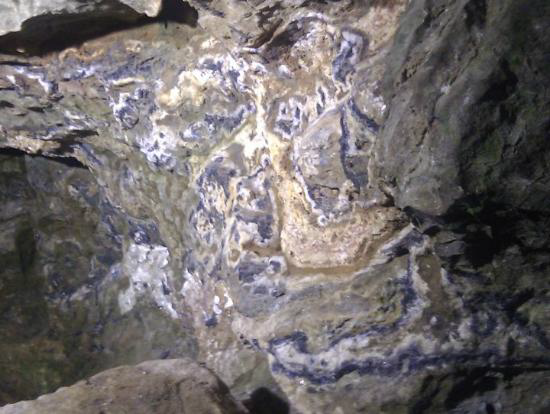
 Blue John Cavern, Derbyshire
Blue John Cavern, DerbyshireFluorite
Fluorite, not named, as might be supposed, by the fluoride content, but named by the German mineralogist Georg Agricola in 1546 after the Greek "fleure" (to flow); because this stone melts easily.
Popular since at least Roman times in the manufacture of steel, glass and enamel (it was used as a flux, which lowers the melting point of a substance and makes it easier to work).
Due to some unique quirk in nature, Blue John is found only in Derbyshire, England. It is named from the French description of this rock "Bleu Jaune" (Blue Yellow). However this colour of fluorite is only found in this one location and has been almost exhausted.
Like amethyst, goblets of blue john were believed to prevent the drinker becoming inebriated.


